Diving Bohol is some of the best diving in the Philippines, and one of the top things to do in the Philippines. Diving Bohol is a top thing to do in Bohol. Learn more about this top Philippines dive resort, where to stay in Bohol, the Bohol Beach Resorts, and the best beach in Bohol!
Bohol is one of many islands (7,641!) in the Philippines. Located off of the major island of Cebu, it is fairly easy to arrange transportation to. This was one of my recent trip destinations due to the direct flights from Incheon International Airport (Seoul), and that is how this Bohol dive trip came to be.
Quick Trip Overview
- Location: Bohol, Philippines
- Closest Airport: Tagbilaran Airport
- Other options: Cebu Airport with 2-hour ferry ride to Bohol.
- 40 Minutes from Airport to Port
- 2 Hours from Port to Port
- Other options: Cebu Airport with 2-hour ferry ride to Bohol.
- Time of Year of Trip: August – cloudy with a chance of rain.
- Time: 4 Days
- Estimated Cost: $1,300
- Plane: $400 (Seoul to Cebu)
- Other Transportation: $150 (Cab to Port, Port to Port x2, Cab to Resort).
- Hotel: $188 (Lost Horizon Resort)
- Food: $150
- Sidemount Course: $268 (4 dives)
- Fun Dives: $140 ($35 x 4 fun dives)
[visualizer id=”2272″]
Diving Bohol Information
- Wet Suit: 3mm / Shortie
- Water Temperature: Average 30 surface, 28 bottom
- Current: Calm
- Average Depths: Majority around 15m, can have walls going down 30m
Dive Season in Bohol, Philippines
The best time to travel to Bohol, Philippines is during the dry season which runs from November to April timeframe. This is when the sun is out the most, and the winds are calmer. This means better visibility.
You will find the most rainfall between the months of June to October – during this time the water is more likely to be rougher. However, that does not mean diving Bohol is completely out of the option, just be prepared for rough seas.
If you want to make a larger trip, then check out another one of the Philippines thousands islands and check out a dive trip to Pandan Island.
What to see at Bohol, Philippines
During your Bohol dive trip, you can expect to see some: Tomato clownfish, skunk clownfish, numerous nudibranch, mantis shrimp, seahorses, lionfish, frogfish, white-eyed eels, moray eels, stonefish, sea snakes. Sea snakes are a very popular ocean life to see in this area – as you will frequently see them surfacing from the cliffs!
While diving Bohol, you are likely to see the smaller ocean life and you will find people trying to catch photos of mantis shrimp and various nudibranch.
However, you may see some bigger ocean life such as whale sharks, manta rays, hammerheads or reef sharks. These are not as likely in this area however.
[visualizer id=”3318″]
If you are really interested in seeing the larger ocean life then check out my post on where to see whale sharks, or diving at Nusa Penida to encounter manta diving at Nusa Penida to encounter manta rays
Dive Spots at Bohol, Philippines
The island is surrounded by numerous dive locations just off the shore – and numerous dive shops that can take you there! The options are endless for diving Bohol. Some recommended dive locations during your Bohol dive trip are:
- Balicasag Marine Park / Fish Sanctuary – one of the most popular marine parks to dive while visiting Bohol. Limited entry and number of divers so have to book in advance typically!
- Bohol Divers Wreck / Habagat Wreck – a sunken yacht boat from a storm in 2000. This boat now lies at 35m along a slope. Recommended for those comfortable with deep dives, and 50 + dives. Typically will start at 35m and follow the slope up.
- Snake Island / Cervera Shoal – popular destination to see Sea Snakes. Recommended for PADI advance divers.
- Arco Point – Known for being a hole in a wall that allows small groups of divers to pass through. Great dive for open water divers due to the entrance and tunnel is decent size making it easy to avoid running into the walls.
Learning Sidemount Specialty at Bohol
One of the reasons I opted for going on a Bohol dive trip was because I found a dive shop that offered sidemount lessons. While I have seen plenty of technical divers using sidemount (mainly on Instagram) I have never been on a dive with someone using sidemount or seen a shop offer the course. So I was immediately sold because it seemed like a unique speciality to learn.
The course included four dives with additional pool time. The course involved learning over again – how to set up, how to fix buoyancy, how to consume air. Diving is different with two tanks instead of one. Learn more about becoming a better SCUBA diver here.
Here is what I learned during my sidemount course on my Bohol dive trip:
- Entry is rough. Water entry is always a little challenging, but now with two tanks, one strapped to each side, things grow more complicated. I was fortunate enough to try three different entry techniques: water setup, backwards roll entry, and long stride. I found the water entry the most difficult but that was primarily due to the waves – someone hands you the tanks one at a time and you have to hook them to the rings. When you are rocking around at the surface it can be difficult. My preferred was actually the backwards roll entry. The boat we conducted the training on was a perfect size, I could strap the tanks to my clips on my side while sitting on the bench and then scoot up to the edge of the boat while the tanks remained on the bench – then rolled in. The downside of the backwards entry is that this will be boat dependent. My second preferred entry was the long stride. Setting up sitting down, and then just like with the normal long stride you waddle over and take a big step off the boat.
- Air consumption is trickier. One would think that when diving sidemount you consume one tank, and then the other. But, if you recall from basic open water diving, your tank grows lighter as you consume the air. What this means if you consume too much air from one tank, it will start floating more than the other tank. What this means is that you should alternate between the tanks in order to maintain equally buoyancy between the tanks. I found switching after 30 bar consumption was the easiest method.
- You are not as agile. I do a lot of photography while diving. While I did think this was a fun experience, it is a lot harder to get a good angle to photograph sea life when you have two tanks hanging off your sides. You are also more likely to just lie horizontal and cannot move vertically too easily.
- It takes two. The setup is tricky. Between getting into the BCD that is used for sidemount which involves someone helping you pull it on, and to pull it off. To actually getting the tanks attached to your body. It involves constant assistance.
Overall, learning sidemount was a fun experience. You have more air to dive longer and have the ability to adjust your equipment while you are in the water. However, depending on what you enjoy to do while you dive it can just add more to your list of items to maintain.
If you are interested in more speciality courses that PADI has to offer then check out my post on diving Silfra and learning dry suit! Or if you are looking for other adventures then learn more about outdoor adventures in the Philippines!
What to do In Bohol
If you are there long enough to enjoy a mixture of diving, and other activities then take a chance to explore the rest of the Island. Other than diving Bohol, if you want to add more to your best things to do in the Philippines that involve wildlife there is a lot to do in Bohol, from spending time on the beach to visiting other natural highlights at Bohol.
Other than diving there are some other popular attractions to see. Such as:
- Chocolate Hills. Numerous mounds that make up the island. The hills earned their name during the winter months when the hillsides turn brown. During this time the hills resemble chocolate mounds.
- Philippine Tarsier Sanctuary. Visit this sanctuary to see the smallest primate in their natural habitat.
Best Beach in Bohol
If diving Bohol is not the only ocean activitiy you want to do then there are plenty of other beach activities to do. There are three beaches that stand out at Bohol that are all contenders as the best beach in Bohol: Dumaluan Beach, Quinale Beach, and Alona Beach.
- Dumaluan Beach: Located on Panglao Island, this beach is pristine with shallow waters on white sands. Local convenience shop offers cheap snacks.
- Quinale Beach: This beach is on the northeast side of Bohol Island. Large arcing beach with white sand against crystal teal water. Cleaned daily with rakes to remove any seaweed from the beach.
- Alona Beach: Next to the main hotel area on Panglao Island, this beach is along a string of restaurants and shops. Similar to the above beaches with the same white sand and beautiful water.
Where to stay in Bohol
If you are looking for the best resort for when you are diving Bohol you are most likely to find it on Panglao Island. A popular location to stay at on Bohol Panglao Island for those visiting the Island of Bohol, the island is located on the southwestern part of Bohol. Panglao is approximately a 30-minute taxi ride from where the ferry boats from Cebu arrive.
There is a strip of the beach: Alona Beach that has dive shops and restaurants to eat at. Making it the perfect location to enjoy the beach life and some nightlife. An added bonus is that you can purchase cheap drinks from most of these locations only spending $2 for a rum and coke!
I stayed at Lost Horizon Beach – because you can book through the dive shop located on location. The total price was only $400 for four nights, and then some extra for the fun dives. Ultimately eating, diving, and staying at the resort cost less than $1000 for a long weekend trip.
Dive Shops in Bohol
Here are some of the highly rated dive shops. You will find that all these dive shops are all located along the same strip of Beach as it is the most tourist populated and easiest start point to the various dive destinations. The first one is the shop that I used:
How to Get to Bohol
Two methods of getting to Bohol to start your Bohol dive trip:
-
- Fly into Tagbilaran Airport. The airport is in Bohol, and therefore you are already there. It is just a 40-minute drive to most resorts from there. The Bohol airport is smaller though and will require a connecting flight to get in.
- Fly into Cebu Airport. I opted for this as there were more direct flight options. From the airport, you have to take a 40-minute taxi ride to the port. From the port is a 2-hour ferry ride to Bohol, followed by another 40-minute cab ride. While this was longer – this one fit my time schedule better.
- The Ferry system from Cebu to Bohol. If you are landing at Cebu Airport then you will be needing to catch the ferry over. The Ferry Terminal at Cebu can be fairly chaotic as there will be a lot of people there to catch the ferry over. If you are able to, have your accommodation register you for the ferry ahead of time, and then all you have to do is get your printed seat assignment at the terminal. There is not too much organization to the process, just an announcement then everyone rushes to the boat. You and your luggage will make it on though, so no worries about that. The assigned seating makes the actual boat ride much more enjoyable.
- Cebu to Bohol Ferry: Three companies run fast ferries from Cebu to Bohol. You can find a ferry almost every thirty minutes primarily in the morning from 0500-1100 then in the later evening. However, there are ferries throughout the day.
- Bohol to Cebu Ferry: The same companies run from Bohol to Cebu. The times are pretty similar where the frequent ones are in the morning from 0500-1100, then the next majority are in the later evening.
- Learn more about the specific ferry times here.
The Bohol airport is smaller, therefore flights coming in are not very frequent. Taking the Cebu to Bohol ferry is most likely the best way to get to Bohol from Cebu.


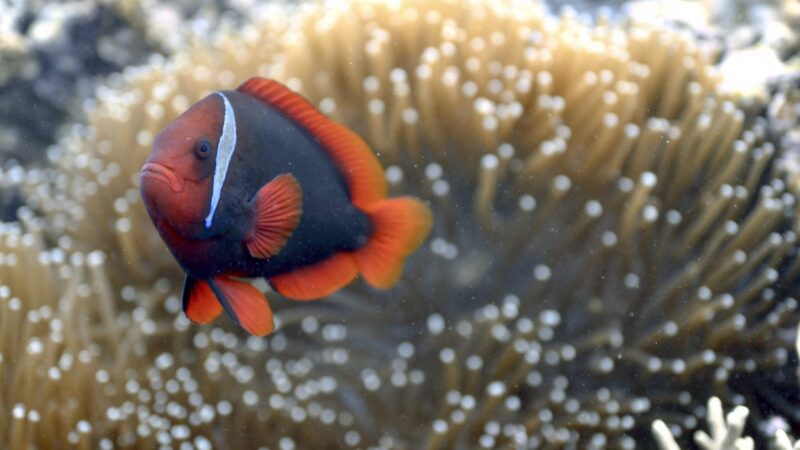
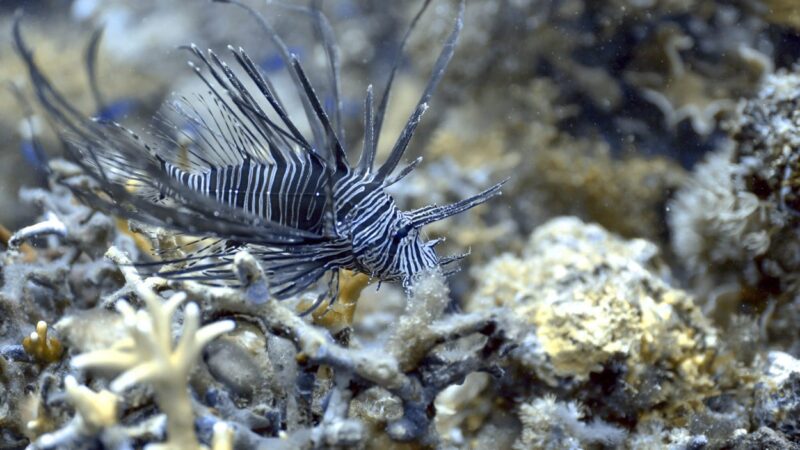
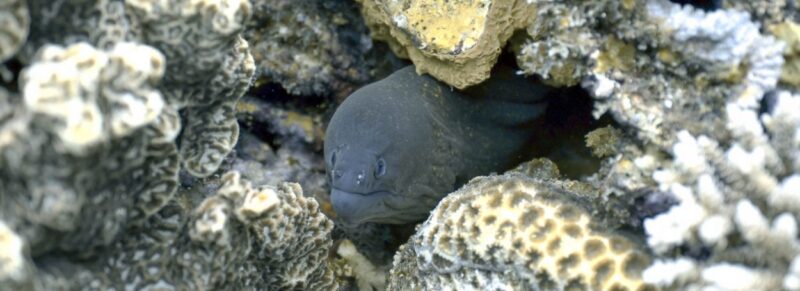
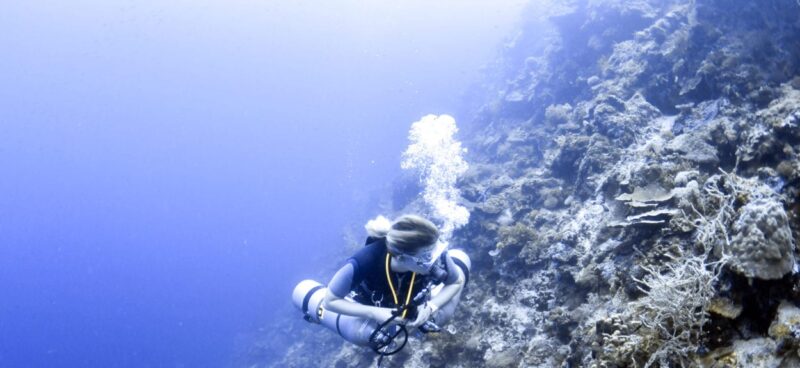
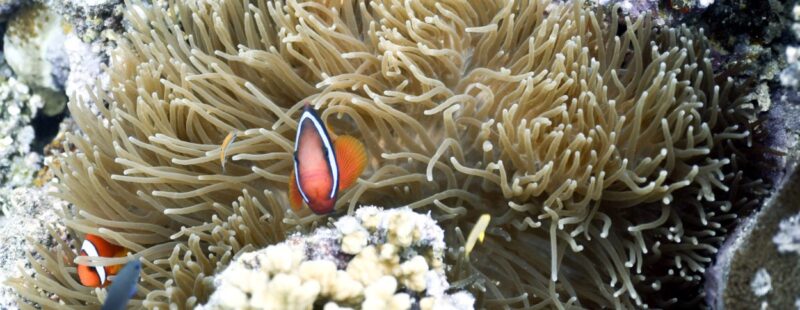
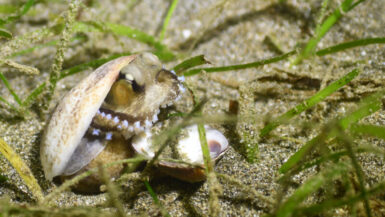
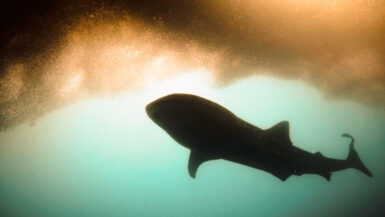
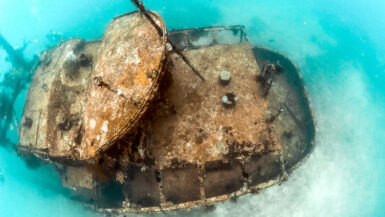
This looks incredible! I haven’t gone diving yet but would love to at some point in the future!
Looks like you saw some amazing underwater creatures. We went diving in Coron last year and it was so cool! I’d love to go back to the Philippines for more diving.
Great article. I love how you describe what you learned during your excursion. I have always wanted to go diving but it seems really hard. What a great experience!
I still need to try diving. Your underwater photos are amazing! Looks like you saw so many pretty fish.
Diving is one thing I have been planning to learn and try. These underwater scenes absolutely look stunning.
You know it’s a good trip when you spend more on diving than airfare!
That cover photo is amazing! I don’t do boats and have a terrible fear of drowning, but I love looking at underwater photos 🙂 I never realized there were so many ways to enter the water for a dive.
Beautiful! I have never dived yet but would want to try one day. I would love to explore the beautiful world below the surface. What a great experience!
Thanks for sharing the cost breakdown! It’s super helpful!
Amazing photos and great tips on the Sidemount Specialty! Would love to go diving in Indonesia again one day 🙂
So much love from the Philippines! It’s such a shame that I live in this country but I’ve never been to Bohol! This looks like an amazing trip, although I’m not sure I would try the diving part 😀 Learng how to swim first perhaps? 😀
[…] If you are interested in doing other specialty courses, check out my guide about gettingPADI sidemount certified in Bohol. […]
[…] Bohol Dive Trip […]
[…] Bohol Dive Trip […]
[…] Contributed by Amy of Oceans to Alpines, follow her on Instagram @oceanstoalpines […]
[…] .IRPP_kangoo,.IRPP_kangoo .postImageUrl,.IRPP_kangoo .imgUrl,.IRPP_kangoo .centered-text-area{min-he… […]
[…] Bohol Dive Trip – Learning Sidemount Along Reef Walls […]
[…] .IRPP_kangoo,.IRPP_kangoo .postImageUrl,.IRPP_kangoo .imgUrl,.IRPP_kangoo .centered-text-area{min-he… […]
[…] Sidemount […]
[…] popular beach destination in the Philippines is Bohol. For this destination, it is another 4 and half hour flight to Cebu airport. From there you will […]